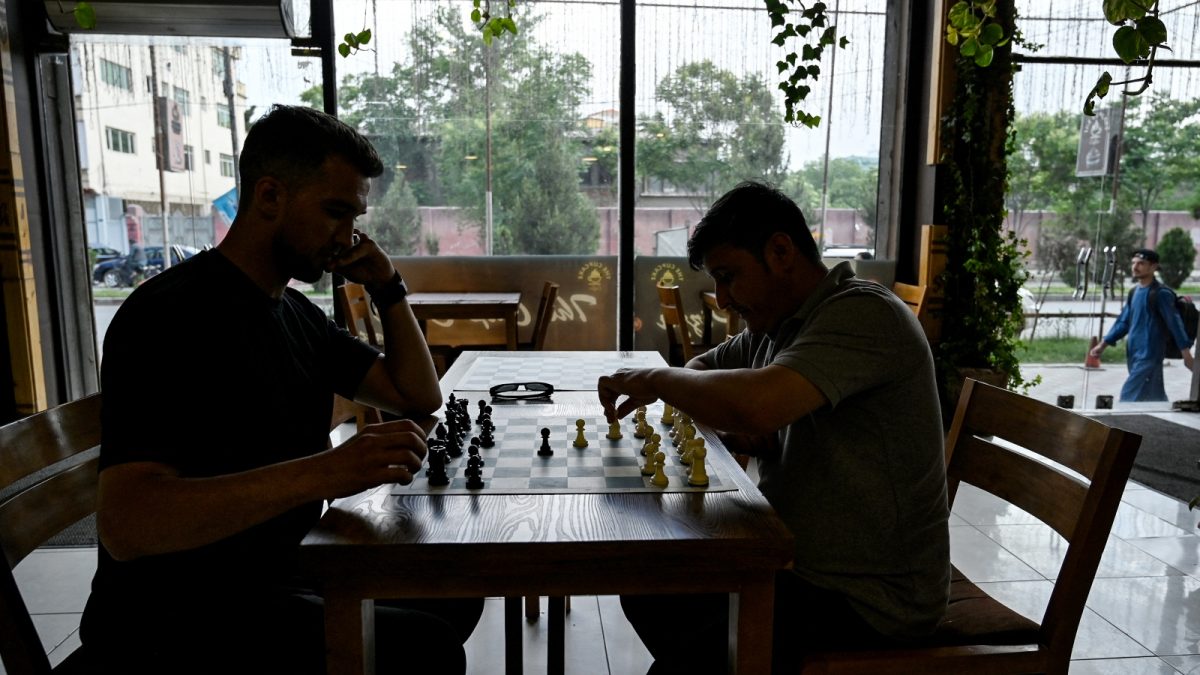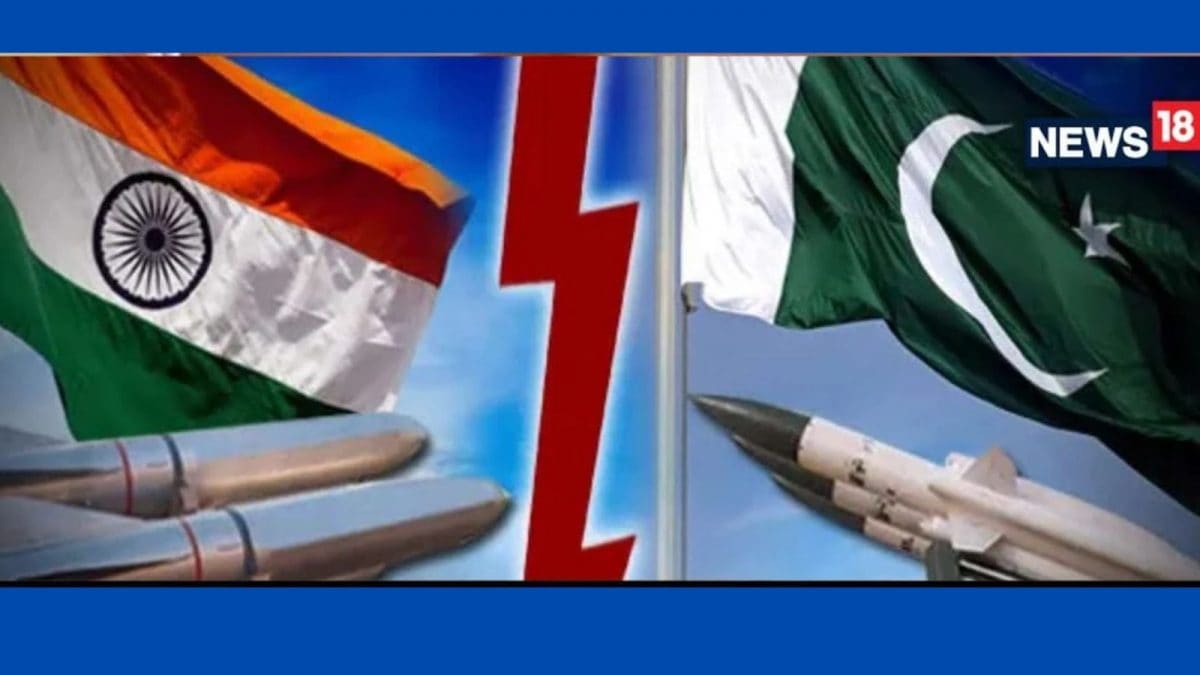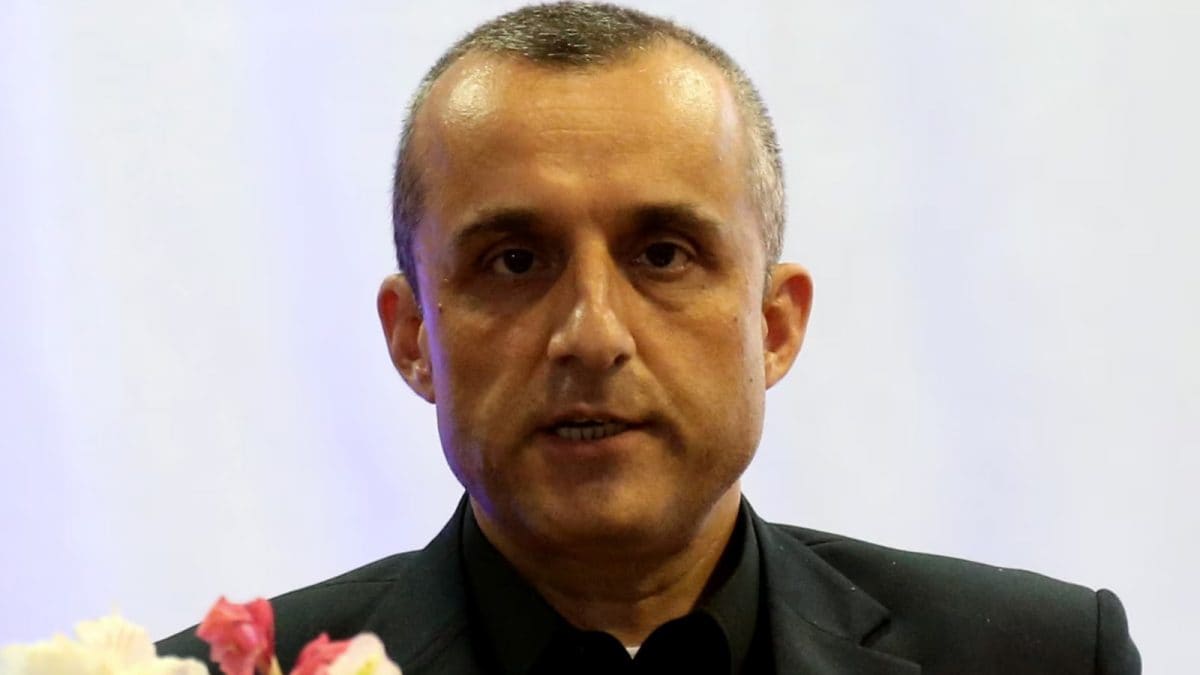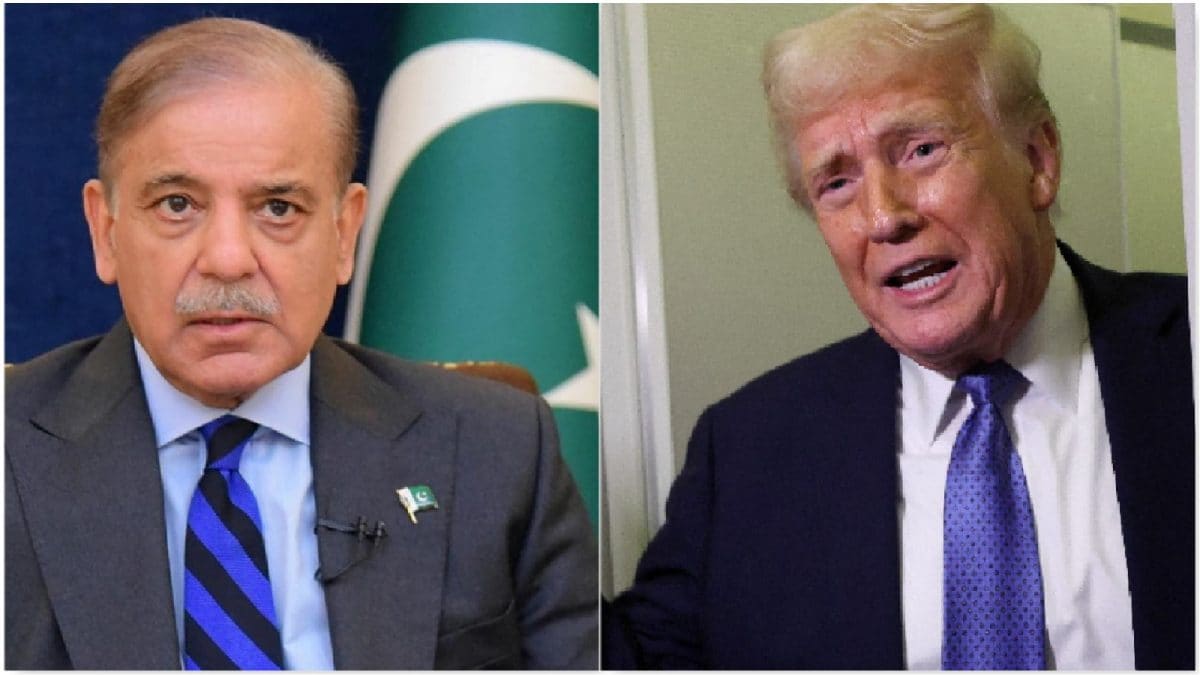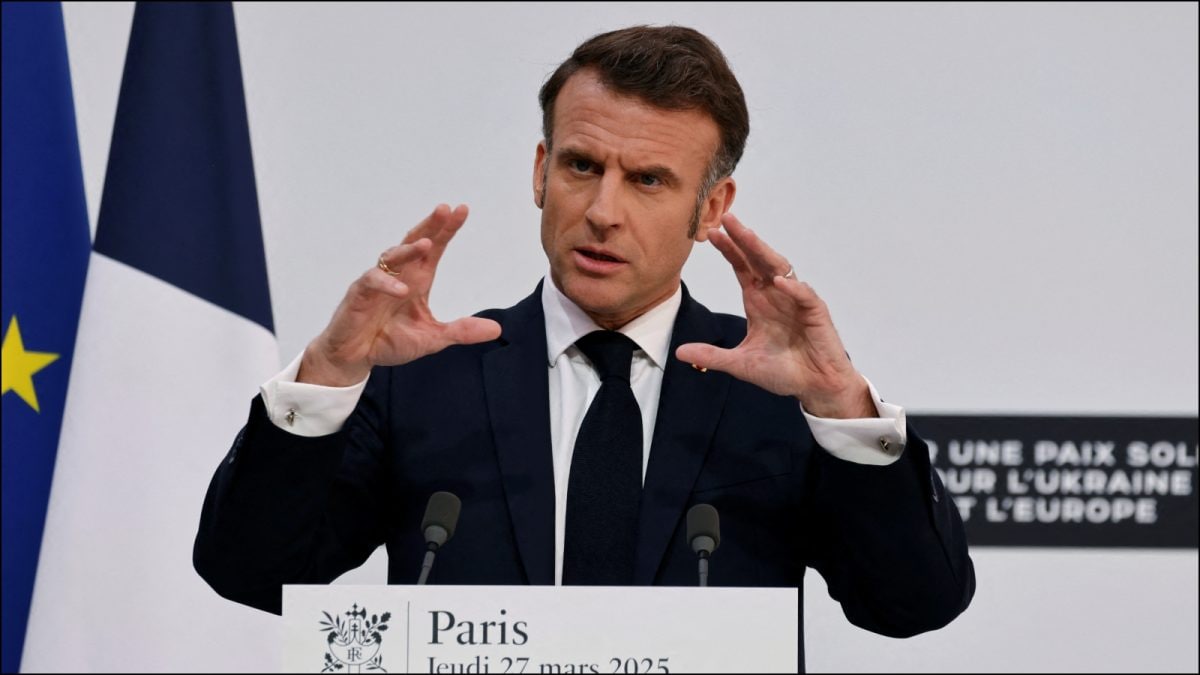Nikkei plunge nears 9% as Japanese bank stocks plummet
Japan’s Nikkei share average tumbled nearly 9% early on Monday, while an index of Japanese bank stocks plunged as much as 17%, as concerns over a tariff-induced global recession continue to rip through markets.
The Nikkei dropped as much as 8.8% to hit 30,792.74 for the first time since October 2023. The index was trading down 7.3% at 31,318.79, as of 0034 GMT, Reuters reports.
All 225 component stocks of the index were trading in the red.
The broader Topix sank 8% to 2,284.69.
A topix index of banking shares slumped as much as 17.3%, and was last down 13.2%.
The bank index has borne the brunt of the sell-off in Japanese equities, plunging as much as 30% over the past three sessions.
Key events Show key events only Please turn on JavaScript to use this feature
Samsung Electronics’ television business is expected to be less affected by US tariffs than rivals because its TVs are mainly produced in Mexico, an executive said on Monday.
However, the world’s top TV maker will still continue to watch the changing US tariff policy, and depending on tariffs, it plans to allocate production accordingly across about 10 production bases around the world, Yong Seok-woo, president of Samsung’s visual display business, says in a Reuters report.
Mexico largely escaped Trump’s new 10% global baseline tariff and steeper “reciprocal tariffs” for many trading partners on Wednesday.
In contrast, China will be hit with a 34% US tariff, on top of the 20% previously imposed earlier this year, bringing the total new levies to 54%.
Continued from last post with more reaction from analysts to Monday’s continuation of the two-day selloff that wiped trillions of dollars from global equity values.
KARL SCHAMOTTA, CHIEF MARKET STRATEGIST, CORPAY, TORONTO
Financial markets are suffering an absolutely brutal selloff as Asian trading hours begin. After a series of Trump administration officials refused to countenance a reversal in the President’s seriously flawed tariff plans over the weekend, investors are marking down US assets and lowering global growth forecasts even further. A flight to safety is underway in currency markets, with the yen and euro climbing against the dollar.
SEAN CALLOW, SENIOR FX ANALYST, ITC MARKETS, SYDNEY
It will be all hands on deck for Asian policymakers today, but they know that they have limited control over market panic. The only real circuit breaker is President Trump’s iPhone and he is showing little sign that the market selloff is bothering him enough to reconsider a policy stance he has believed in for decades.
DAVID SEIF, CHIEF ECONOMIST FOR DEVELOPED MARKETS, NOMURA, NEW YORK
In market selloffs like this, panic and forced selling via margin calls can dominate for a while. That’s not to say that it isn’t based on a very real negative event, which is these tariffs. But I think the ensuing selloff can take on a life of its own. Bottom line, I’m not sure when stocks will find a bottom, but I don’t think stocks are returning to their pre-April 2 levels any time soon.
ANINDA MITRA, HEAD OF ASIA MACRO STRATEGY, BNY INVESTMENT INSTITUTE, SINGAPORE
The market may be justifiably concerned but it appears to be pricing in the worst of an adverse trajectory of trade policy shifts in the US. In this context, any (eventual) negotiated and downward adjustments in bilateral tariffs or a bigger-than-expected US fiscal offset or a quicker-than-expected Fed policy pivot may counter some of the headwinds.
But until there is greater visibility in bilateral negotiations and tariff rollbacks, and other macro policy support, market volatility may stay elevated.
Continued from last post:
JASON WONG, SENIOR MARKET STRATEGIST, BNZ, WELLINGTON
Trump’s not blinking yet, and his entourage aren’t blinking over the weekend ... but there comes a point, when they do capitulate, and you’re trying to play the market, as to when that might happen - we need some sort of Trump team response, before the bleeding is going to stop.
KAREN JORRITSMA, HEAD OF EQUITIES, AUSTRALIA, RBC CAPITAL, SYDNEY
Trump got us into this. But what can get us out of it? It’s not him, if there’s no clear line of sight here to the exit point for this, or the catalyst for this to be over – that’s my concern. I think he felt he had control, but he hasn’t – he’s lost control. It’s gone too far. The Chinese have got involved ...

ROBERT PAVLIK, SENIOR PORTFOLIO MANAGER, DAKOTA WEALTH, FAIRFIELD, CONNECTICUT
One of the problems is that people were looking for some kind of comment over the weekend from somebody in the administration that would indicate some possible negotiation or maybe a change in the tariffs. But they seemed to dig in their heels so we’re down more than 4%.
… People are real nervous about the uncertainty this brings, the potential decline in earnings, the fact the Federal Reserve has said they are going to wait and stay on hold until they get more clarity. If the Fed isn’t coming to the rescue, then who else is going to come to the rescue? People are afraid the worst is yet to come. They’re worried about a market crash. They’re worried about what follows, a recession here domestically and then globally, leading to a possible depression.
JOHN MILROY, PRIVATE WEALTH ADVISOR, ORD MINNETT, SYDNEY
All the conversations I have had with clients are more about when do we buy something rather than sell. This is leveraged selling that has no choice. I have fear for some of those private credit shops as prices and credit spreads swing wildly.
Key in the short term is if China pulls the pin on a big stimulus package directed at consumers. The broader market was already expensive, always had to be a reckoning. Here it is. Next comes the earnings changes.
ANGELO KOURKAFAS, SENIOR INVESTMENT STRATEGIST, EDWARD JONES, ST LOUIS
Fear is what continues to drive market action since the April 2nd tariff announcement. I think many investors are fearing the worst-case scenario of a prolonged trade war. Until we get an off-ramp and some indication that we potentially are pivoting to cutting deals to lower tariffs, that sentiment will remain fragile.
Continued next post
'Gone from bad to worse': analysts on the market rout
What’s been the reaction of analysts to today’s drubbing of Asian share markets and US stock futures in response to the Trump tariffs?
Here’s a range of voices, care of Reuters, on the continuation of a two-day selloff as fears of a global trade war led investors to ramp up bets on the risk of recession and a US interest rate cut as early as next month.
TONY SYCAMORE, MARKET ANALYST, IG, SYDNEY
Things have gone from bad to worse this morning. The lack of reaction from Trump and from Bessent [the US Treasury secretary], in terms of their concern levels appearing to be very, very low in terms of the market dislocation. If there isn’t some sort of walking back of the announcements, then we’re heading for a liquidity event and liquidity will get sucked out of these markets big time across all asset classes. We’re already seeing that. We’re going to see obviously the US dollar return to being the kingmaker except against the yen.
CHARU CHANANA, CHIEF INVESTMENT STRATEGIST, SAXO, SINGAPORE
The lack of any policy response from the Trump administration on the market sell-off is adding to the uncertainty, reinforcing the idea that the current trajectory may remain unchanged in the near term. Unless we see a clear pivot from policymakers, volatility is likely to stay elevated, and the path of least resistance for risk assets remains to the downside.
MATTHEW RUBIN, CHIEF INVESTMENT OFFICER, CARY STREET PARTNERS, NEW YORK
One of the things that clearly clients have more exposure to today is private markets ... there’s a little bit more control there in the private markets of the portfolio because you take out some of the daily trading and the daily volatility. I think that’s important. I wouldn’t call that a refuge, though.
This didn’t come out of some sort of exogenous risk that was uncovered. This is being brought on because of the tariffs. And none of us know when we’ll see more clarity or resolution, whether it be further negotiation and whether this is really about negotiation or whether this is about a fundamental change to try to reshape the manufacturing economy here in the US.
DEAN FERGIE, DIRECTOR, CYAN INVESTMENT MANAGEMENT, MELBOURNE
I expect a lot of panic selling this morning but over the coming days some level of rationality should prevail and we’ll see some buying support come in. The sectors to watch will be the financials/fund managers impacted by global market weakness, and the global discretionary stocks.
Continued next post
Among the governments already signalling a willingness to engage with the US to avoid Trump’s tariffs, Taiwan’s president has offered zero tariffs as the basis for negotiations.
On Sunday Lai Ching-te pledged to remove trade barriers and said Taiwanese companies would raise their US investments.
The Israeli prime minister, Benjamin Netanyahu, said he would seek a reprieve from a 17% tariff on the country’s goods during a planned meeting with Trump on Monday, Reuters reports.
An Indian government official said the country did not plan to retaliate against a 26% tariff and that talks were under way with the US over a possible deal.
In Italy, the prime minister, Giorgia Meloni – a Trump ally – pledged on Sunday to shield businesses that suffered damage from a planned 20% tariff on goods from the European Union.
Italian wine producers and US importers at a wine fair in Verona on Sunday said business had already slowed and feared more lasting damage.
India’s benchmark Nifty 50 is poised to open sharply lower on Monday.
The GIFT Nifty futures were trading at 22,089 as of 7:55 am IST, indicating that the blue-chip Nifty 50 will open about 3.6% lower than Friday’s close of 22,904.45, Reuters is reporting.
“We see the recent lows around 21,800 get re-tested on the Nifty 50 given this week’s price action,” said Abhishek Goenka, chief executive officer of India Forex and Asset Management.
We remain cautious in the near term given the tariff-related uncertainty.
Other Asian markets have slumped amid the worries of a global trade war and a US recession triggered by the Trump Administration’s tariffs regime.
India’s central bank is widely expected to cut rates by 25 basis points amid expectations that monetary policy may turn more supportive as the tariffs threaten to hurt the economy.
The Nifty 50 is trading about 13% lower than the record high levels hit in late September, as slowing earnings and growth triggered a $27-billion foreign exodus from domestic markets.
Meanwhile, India is likely to meet its projected growth target of 6.3-6.8% for the fiscal year 2025-26 if oil prices remain below $70 a barrel, despite the global disruptions due to US tariff announcements, a finance ministry official said.
China base metal prices tumble
Base metal prices in China fell sharply on Monday amid the escalating global trade war, with copper prices sliding to a more than three-month low.
The most-traded copper contract on the Shanghai Futures Exchange (SHFE) dropped 7% to 73,640 yuan per metric ton as of 0138 GMT, marking its lowest level in over three months since 3 January, Reuters reports.
The benchmark three-month copper on the London Metal Exchange (LME) was down 1.9% to $8,614.5 per metric ton.
China – a top metals consumer – hit back on Friday with additional 34% tariffs on all US goods from 10 April, after Donald Trump imposed a 34% tariff on most Chinese goods as part of his sweeping reciprocal tariff program.
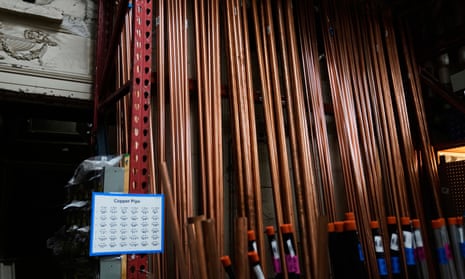
A base metals trader said:
With China’s markets closed last Friday, which coincides with significant declines in LME base metals, we anticipated a sharp drop in China’s commodity prices today. Some even hit their lower limits as soon as trading began.
Another trader said:
The retaliatory tariff makes us worry about trade war, which will impede economic growth globally.
SHFE aluminium slid 4.5% to 19,515 yuan a ton, zinc lost 4.2% to 22,195 yuan, lead fell 2.4% to 16,810 yuan, while nickel was down 6.7% to 120,370 yuan, tin fell 6.5% to 273,680 yuan.
Among other metals, LME aluminium lost 0.3% to $2,372.5 a ton, lead fell 0.3% to $1,901, zinc slid 0.8% to $2,639, tin was down 2.2% at $34,615 and nickel was down 0.1% at $14,775 a ton.
South Korea’s finance minister has said the government will prepare support measures for sectors with urgent needs, ahead of Donald Trump’s 25% tariff coming into force this week.
Choi Sang-mok “emphasised the need to analyse the impact on the macroeconomy and prepare support measures for sectors with urgent needs”, the ministry said in a statement on Monday .
On 2 April, Trump introduced a blanket tariff on imports to the US and higher
tariffs against “worst offenders”, including a 25% duty on imports from South Korea, set to come into force on Wednesday.
Reuters also reports that South Korea’s exports to the US hit a record high of $127.8bn in 2024, with automobiles – the top-selling product – accounting for 27% of the total.

On Monday, Choi and other policymakers also reviewed a response strategy ahead of the trade minister, Cheong In-kyo, visiting the US, the finance ministry said.
Separately, South Korea’s financial regulator asked firms and state institutions on Monday to be prepared to provide liquidity support for exporting companies and their contractors hit by tariffs.
In Australia, more than $160bn has been wiped off the Australian share market this morning as fears of a full-blown trade war grip investors, reports Jonathan Barrett.
The benchmark S&P/ASX 200 sank more than 6% to trade below the 7200-point mark within 15 minutes after the market opened on Monday.
The Australian dollar, meanwhile, fell to its lowest level since Covid against the US dollar as global markets sell off against the prospects of a global recession.
One Australian dollar was buying just 60 US cents on Monday morning after falling to a low of 59.64, its lowest point since April 2020, reports Luca Ittimani. It was worth 64 US cents on Wednesday, hours before Donald Trump set markets reeling with his tariff announcement.
The Australian dollar also reached pandemic-era lows in Europe, with one dollar buying just 54.4 Euro cents or 46.2 British pence at its lowest point on Monday morning.

Donald Trump says foreign governments will have to pay “a lot of money” to lift the sweeping tariffs he has characterised as “medicine” and which have routed Asian share markets. Those are among the top lines are in our latest full report on the turmoil.
The Nikkei dropped as much as 8.8% to hit 30,792.74 for the first time since October 2023.
In South Korea, trading on the Kospi index was halted for five minutes at 9.12am as stocks plummeted.
The Taiwan stock exchange said early on Monday it would roll out more policies to stabilise markets if there were “irrational falls”.
See the full report here:

 1 month ago
1 month ago
